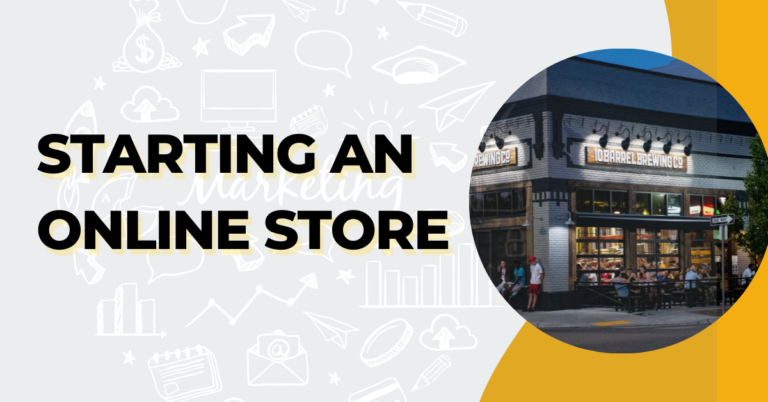Email marketing is one of the best ways to grow your business. Not only are you communicating with potential customers and clients, but you’re giving them valuable content that keeps them coming back to your site again and again. The key to email marketing success, however, lies in knowing how to start it in the first place. If you’re ready to reap the benefits of email marketing, follow these steps for a comprehensive step-by-step guide on how to start email marketing.
Getting Started
Before you start email marketing, you need to gather a few things.
First, you’ll need a list of email addresses. You can compile this list yourself, or you can purchase a list from a reputable source.
Second, you’ll need an email service provider (ESP). This is the company that will help you send your emails. Once you have these two things, you’re ready to start email marketing!
There are a few different ways to go about email marketing. You can send out promotional emails, educational emails, or a mix of both. Promotional emails are all about selling your product or service, while educational emails provide value without selling anything. The best way to decide what type of email to send is to think about what your goal is.
Do you want to educate people on something new? Do you want them to buy something? Do you want them to tell their friends about your business? All three goals may be possible with email marketing, but it’s up to you to figure out which one works best for your situation.
Define Your Target Audience
Before you start you need to define your target audience. Who are you trying to reach? What are their interests? What are their needs? Once you have a good understanding of your target audience, you can start creating content that appeals to them.
Set Up Your Newsletter Platform
This is a great way to stay in touch with your customers and promote your business. But before you start sending out emails, you need to set up your newsletter platform. Here’s a step-by-step guide to getting started.
1. Choose an email service provider. There are many options available, Like, Mailchimp, ConvertKit, Sendinblue, etc. So do some research to find the one that best fits your needs.
2. Create a sign-up form for your newsletter. Include fields for subscribers to enter their names and email address.
3. Add a sign-up form to your website or blog. You can use a plugin or widget to make this process easier.
4. Promote your newsletter on social media. Share it on Facebook, Twitter, LinkedIn, Instagram, and any other platforms where your target audience hangs out. Be sure to include information about how people can subscribe as well as links to the sign-up form so they don’t have to search for it.
5. Be sure you’re not breaking any laws when it comes to email marketing. Read all of the FTC guidelines so you know what is and isn’t allowed when advertising via email. Don’t send spammy messages without reading this first! After your account has been approved by the recipient, you’ll be able to send messages from within your email management system. Here are some things to keep in mind when crafting your message:
1) Keep your subject line short and catchy. It should be clear who the message is from and what it contains. Make yourself memorable!
2) Personalize each message using recipients’ names and other contact info (e.g., Hey Salman or Hi Muhammad, how was vacation?). And remember no more than one promotional message per week–at most!
3) Be polite and professional at all times.
4) Include unsubscribing instructions in every single message if there’s a chance someone might want to stop receiving them. Your final message should also include your signature – your name and/or logo – so people know who sent the email.
Now that you’ve created your newsletter and signed up for an email management service, you’re ready to start messaging your list. Just remember these tips for successful messaging: personalize each message, include unsubscribe instructions, limit promotional messages to once per week at most, and always be courteous and professional.
Define Your Audience Needs
This can be a great way to reach out to your target audience and build relationships with them. But before you start sending out emails, you need to take some time to define your audience’s needs. This will help you create content that is relevant and interesting to them.
Your list might include the following information:
-Age of your audience
-Location of your audience
-Income level of your audience
-Gender of your audience
-Hobbies or interests of your audience
The more in-depth you are, the better off you’ll be when it comes to identifying their needs. With this information in hand, you’ll know what sort of subjects would resonate with them most.
Create an Email Template
1. Before you start email marketing, you need to create an email template.
2. An email template is a way to ensure that all of your emails have a consistent look and feel.
3. Plus, it saves you time by having a pre-made template that you can use over and over again.
4. To create an email template, start by picking a color scheme and font that you like.
5. Then, add your logo and any other images that you want to include.
6. Finally, write out the text of your email in the template.
7. Once you’re finished, save the template and you’re ready to start email marketing!
8. Next, create an email list for people who are interested in what you offer.
Optimize For Mobile Devices
Mobile devices are becoming increasingly popular, which means that more and more people are reading their emails on their phones. If you want to make sure that your email marketing campaign is successful, you need to optimize your emails for mobile devices.
Here are a few tips for optimizing your emails for mobile devices:
1) Ensure all links are clickable and lead to the appropriate website or landing page.
2) Make use of text links instead of graphic buttons wherever possible.
3) Avoid using images if possible – in many cases they will not display properly on the smaller screen of a phone.
4) Use short paragraphs with short sentences (and limit it to one thought per paragraph).
5) Finally, always remember to include an unsubscribe link at the bottom of each email.
Email Marketing: Getting Subscribers
Growing your email list is essential to any email marketing campaign. Here are a few tips to get started:
1. Use a sign-up form on your website.
2. Offer something of value in exchange for an email address (e.g., a free e-book, discount code, etc.).
3. Run a social media campaign with a call-to-action to sign up for your email list.
4. Host a webinar and require attendees to register with their email addresses.
5. Add a link to your sign-up form in your email signature.
6. Leverage any offline events by collecting email addresses at the event registration table.
7. Make it easy for people to subscribe; provide two or three options depending on preferences: newsletter, RSS feed, and Facebook updates.
8. Provide a clear description of what you’ll be sending out so people know what they’re signing up for.
9. Don’t let spam filters block you out! Review best practices for email marketing on your mailing list and check out your email marketing provider’s guidelines.
Once you have your strategy down pat, get going!
There’s no better time than now to start building your mailing list – the sooner you begin growing it, the sooner you’ll see results.



